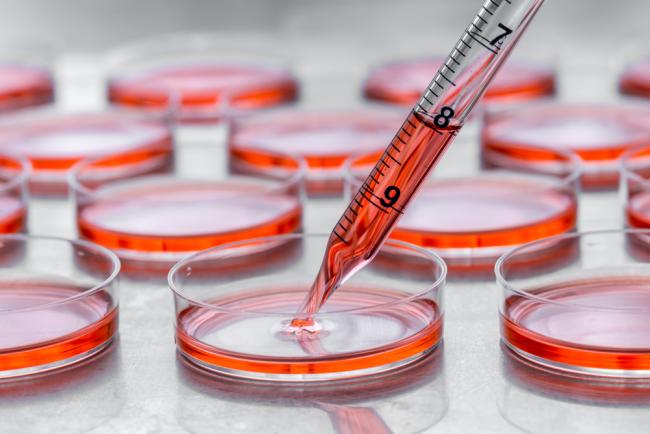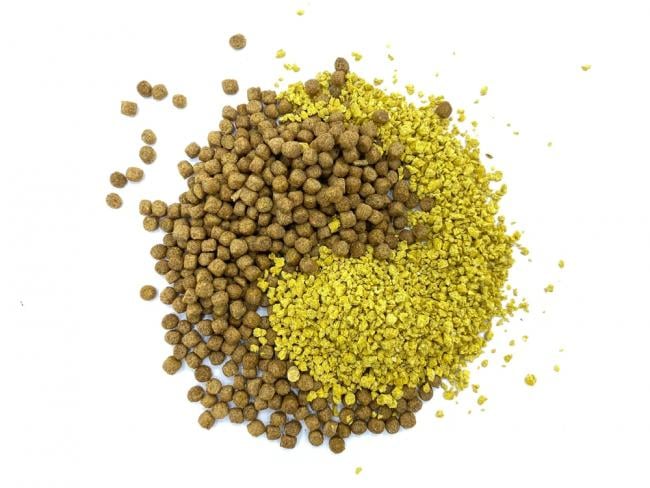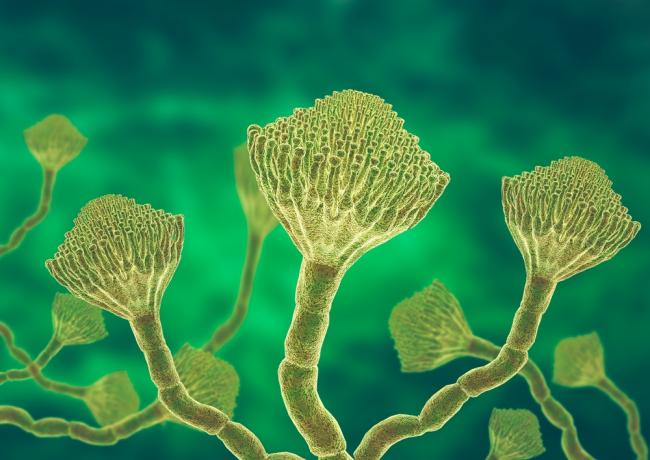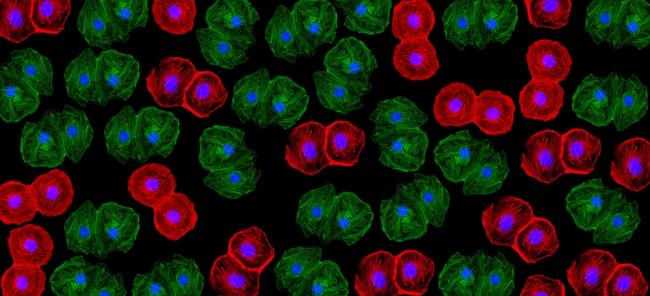Tunicamycin is a natural antibiotic that is produced by several species of Streptomyces, such as Streptomyces clavuligerus and Streptomyces lysosuperificus. It was first discovered in the 1970s after applying the agar diffusion method on about 4,000 isolated actinomycetes. This method discovered a strain that produced an antibiotic that was active against RNA and DNA viruses1.
Tunicamycin structure is enriched with uracil, D-N-acetylglucosamine (GlcNAc) which is attached to the C5'-C6' core by a 1,1-β,α-trehalose-type glycosidic bond, and an amide-linked fatty acid2. The different lengths of fatty acid chains create a mixture of tunicamycin homologs. The molecular weight of the 4 four main homologs varies between 817gr/mol to 859gr/mol.
Tunicamycin inhibits N-linked glycosylation and produces endoplasmic reticulum (ER) stress, making it essential for research. Tunicamycin specifically targets the activity of GlcNAc-1-phosphate transferase (GPT), the key enzyme responsible for initiating N-glycosylation in the ER. By inhibiting GPT, tunicamycin prevents the synthesis of GlcNAc-PP-dolichol, a fundamental precursor required for the glycosylation process. Protein glycosylation is a crucial post-translational modification that influences various aspects of proteins, including their structure, folding efficiency, stability, degradation, secretion, and intracellular transport3.
Tunicamycins are known to inhibit the enzymatic activity of two critical bacterial enzymes: phospho-N-acetylmuramyl-pentapeptide transferase (MraY) and undecaprenyl-phosphate α-N-acetylglucosaminyl 1-phosphate transferase (WecA). MraY plays a role in the biosynthesis of peptidoglycan, a vital component of the bacterial cell wall that ensures structural integrity and protection. On the other hand, WecA is involved in the synthesis of lipopolysaccharides, which are essential components of the outer membrane in Gram-negative bacteria. By targeting these enzymes, tunicamycins disrupt fundamental processes required for bacterial survival and proliferation, contributing to their antibacterial effects. Notably, MraY is an important enzyme for bacterial viability, making it an attractive and promising target for the development of novel antibacterial drugs2.
Tunicamycin is a strong antibiotic that induces the unfolded protein response (UPR). This response activates during accumulation of unfolded or misfolded proteins in the lumen or ER, and is conserved in mammalian species, yeast and worm organisms. In addition to the UPR, tunicamycin blocks abnormal glycosylation in different cancer cells, including breast cancer, gastric cancer, and pancreatic cancer4. Research has shown that abnormal glycosylation arises not only because of initial oncogenic transformation but also serves as a critical factor in driving invasion and metastasis5. Therefore, avoiding these glycosylation's in cancerous cells inhibits growth of cancer cells and the progression of tumors, thus, can be regarded as a powerful anticancer drug for various types of cancer4.
A Breast breast cancer study was done in-vivo and in-vitro on pre-clinical mice. Tunicamycin was used to block the glycosylation in cancerous cells. Results showed that tunicamycin was able to inhibit the progression of angiogenesis and the tumor with no signs of toxicity5.
In neurodegenerative diseases (such as Alzheimer’s and Parkinson’s disease) cell viability and mis mis-regulation can be interfered by change in protein homeostasis within the ER. Therefore, the mechanism of tunicamycin on the folding of proteins in the ER and inducing the UPR is a topic of interest for research5.
Nevertheless, tunicamycin can have a cytotoxic effect since it is not cell-type or tissue specific. Prolonged exposure to tunicamycin can trigger cell death in a variety of cells. One-way researchers are trying to overcome this toxic effect is with nanoparticles. Nanoparticles were found to be useful in different domains, such as cosmetics and drug delivery, and are improving cancer therapy by enhancing the efficacy and specificity4.
Tunicamycin is soluble in DMSO, alkaline water and methanol, and is unstable in acidic solutions. Recommended storage conditions for this compound are in a tightly closed container at -10°C to -25°C.
In conclusion, Tunicamycin is a powerful and essential tool for scientific research, particularly in cancer, neurodegenerative diseases, and viral infections. Its ability to inhibit N-linked glycosylation and induce the Unfolded Protein Response opens the door for groundbreaking discoveries in disease mechanisms and therapeutic strategies. With Fermentek providing high-quality tunicamycin for researchers globally, the future of glycosylation research holds immense potential for advancing human health.
Fermentek provides tunicamycin in highly pure powder form (>98%) with various quantity options available.
- Takatsuki A, Arima K, Tamura G. Tunicamycin, a new antibiotic. I. Isolation and characterization of tunicamycin. J Antibiot (Tokyo). 1971 Apr;24(4):215-23. doi: 10.7164/antibiotics.24.215. PMID: 5572750.
- Yamamoto K, Ichikawa S. Tunicamycin: chemical synthesis and biosynthesis. J Antibiot (Tokyo). 2019 Dec;72(12):924-933. doi: 10.1038/s41429-019-0200-1. Epub 2019 Jun 25. PMID: 31235901.
- Yoon D, Moon JH, Cho A, Boo H, Cha JS, Lee Y, Yoo J. Structure-Based Insight on the Mechanism of N-Glycosylation Inhibition by Tunicamycin. Mol Cells. 2023 Jun 30;46(6):337-344. doi: 10.14348/molcells.2023.0001. Epub 2023 May 16. PMID: 37190766; PMCID: PMC10258461.
- Banerjee S, Ansari AA, Upadhyay SP, Mettman DJ, Hibdon JR, Quadir M, Ghosh P, Kambhampati A, Banerjee SK. Benefits and Pitfalls of a Glycosylation Inhibitor Tunicamycin in the Therapeutic Implication of Cancers. Cells. 2024 Feb 25;13(5):395. doi: 10.3390/cells13050395. PMID: 38474359; PMCID: PMC10930662.
- Bassik MC, Kampmann M. Knocking out the door to tunicamycin entry. Proc Natl Acad Sci U S A. 2011 Jul 19;108(29):11731-2. doi: 10.1073/pnas.1109035108. Epub 2011 Jul 6. PMID: 21734150; PMCID: PMC3141928.
- Banerjee DK, Seijo Lebrón A, Baksi K. Glycotherapy: A New Paradigm in Breast Cancer Research. Biomolecules. 2022 Mar 23;12(4):487. doi: 10.3390/biom12040487. PMID: 35454076; PMCID: PMC9026886.





